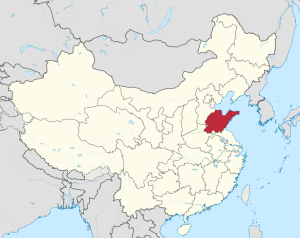From Bujinkan Santa Monica by Michael Glenn
| A Point in Ueno Sation. photo by Michael Glenn |
It was a cool morning under the Japanese maples, so Hatsumi Sensei wore a quilted 羽織 haori which was the color of pearl. I don’t know if anyone else heard him, but he muttered the phrase “open sesame!” Because we were about to open a gate to hidden treasures.
One of those treasures arrived when Soke broke the attack of his opponent, causing his spine to arch back. Sensei hooked into his eyes with one finger. Then he dropped away to release the tension.
At this moment, he caught the fall of his uke with the position of his body. This had the effect of completely twisting the limbs and spine. And crushing like a trash compactor.
Hatsumi Sensei looked at all of us and said,
“全体駄目 zentai dame, or when everything is hopeless, there is that one point, 点眼 tengan, which is the kyūsho of taijutsu.”I had never heard of tengan, but lucky for me, Soke explained by gesturing with his finger. Tengan is like when you use an eyedropper. It's like dropping a spot in the middle of an eye.
But tengan is a play on words. Change the kanji to 天眼, and it means the eyes of heaven, or divine eye. This is a Buddhist concept that suggests you can see in the darkness, or are clairvoyant. Harness perception that is almost supernatural.
The eye of heaven can see everything. The future, the past. It can see into your enemy’s mind. Now it is easy to predict his strategy or find his weakness.
Hatsumi Sensei drew a circle around that point in the air. He continued to explain,
“It’s not a point on the body. This is 急所丸 kyūsho maru. This is not something written in a scroll anywhere. This is for the jugodans. Please discover (発見 hakken) the kyūsho within the movement. You need to discover that for yourself.”Since that day, I have been working to study kyūsho maru. It is an idea that ripples across all of my training like a drop in a pond. Here are a few of the ripples to consider.
The kanji for 急所丸 kyūsho maru can start us off. Kyūsho means a vital point, or an essential point. Maru means round, but like a true circle, it implies perfection. The kanji itself is 9 (九) plus one stroke. As Hatsumi Sensei is fond of saying, this equals 10 which is perfect in Japanese numerology.
So kyūsho maru is the “perfect kyūsho” for the moment. This kyūsho might be on the opponent’s body. But it can be anywhere in the kukan. When you consider that possibility, the implications for your training grow from that point.
At a basic level, I find the weak point in the kukan and attack it. But as I wrote in Kukan no Kyūshō 空間の九勝: Twisting Around a Moment in Space, you might use that kyūsho to pivot. You move around it in a state of flux. There is no fixed coordinate, no set technique.
These kyūsho are in the space itself, the kukan. They are in the emptiness. When you can attack those points, the results will be bigger than your own ability or your own strength.
| Kashiwa Plaza Hotel Selfie |
Later that afternoon, as the sun broke through the gray clouds, Hatsumi Sensei described capturing these points,
“Within the flow of the kukan (kukan no nagare), you want to control these very small points such as the fingers, the eyes, or the breath. You’re taking those points, but in a way that it is difficult for the opponent to perceive what’s happening in that flow. This is what we’re studying.”What was the test for us Jugodans? There is no easy answer to that. I am still testing.
Hatsumi Sensei had us all face the sun and bow to wrap up the day of training. I felt the warmth on my face. But the sun is just a bright point in infinity, hanging in emptiness.


